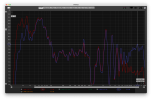I'm going to buy a umik to use with REW. I'm anticipating generating eq settings to use with Camilla DSP on my 2 channel set up. Is there any practical reason why I should choose the umik 2 over umik 1 for this? I can see that the version 2 is essentially more modern with lower noise and higher sampling rates, but I can't see a practical advantage for my use case. I was interest in linearity of frequency response-version one is with 1db across 20 to 20000 Hz, but I can't find this spec for version 2.
Anyway-I'll probably get version 1 unless someone chimes in with a good reason to go for version 2 instead.
Anyway-I'll probably get version 1 unless someone chimes in with a good reason to go for version 2 instead.
